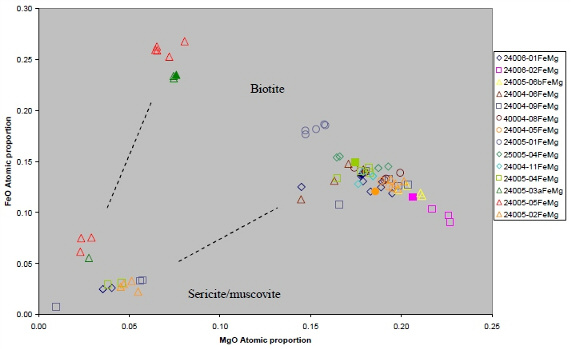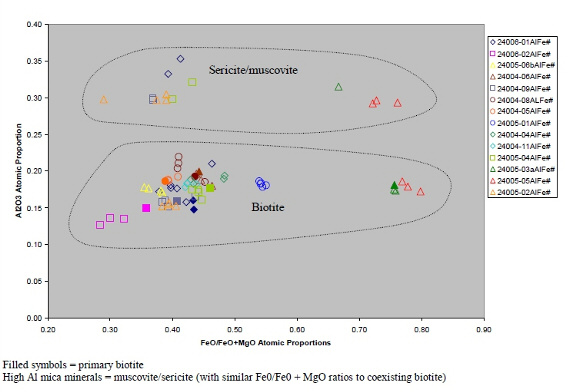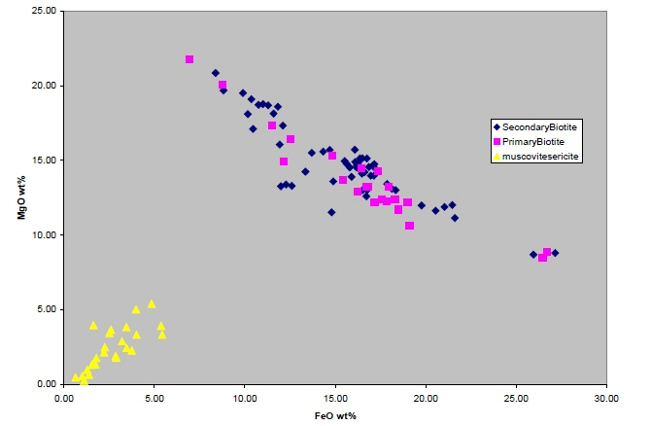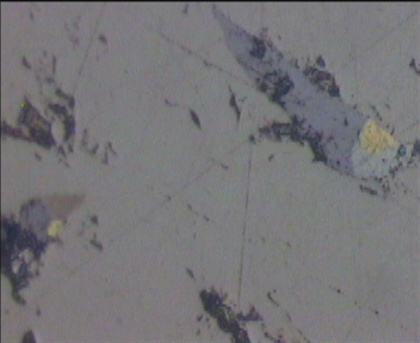Right. Metasomatic biotite and phengitic muscovite/sericite occurring as intergrowths in replacement and fracture/cavity-fill assemblages have similar iron/magnesium ratios.

Petrological studies, including Electron Microprobe analyses of mica minerals in diamond hole TPD084 of the Tropicana project, Yilgarn Craton, Western Australia, define variations in the distribution of peak metamorphic mineralogy and hydrothermal mica mineralogy, and variation in hydrothermal mica mineral chemistry consistent with wallrock buffering of hydrothermal fluids. There is a positive correlation between elevated down-hole gold chemistry and mica mineralogy and chemistry to indicate wallrock buffering of hydrothermal fluids as having been important in determining the distribution of gold. Over the interval of diamond core containing peak metamorphic biotite there is a close correlation between the Fe/Fe+Mg ratio of hydrothermal biotite and peak metamorphic biotite indicating wallrock buffering of hydrothermal fluids. Down hole gold chemistry is elevated where peak metamorphic and hydrothermal biotite are most abundant, where hydrothermal pyrite is more abundant than pyrrhotite, and where peak metamorphic K-feldspar is present and locally more abundant than plagioclase.

Left. Secondary/metasomatic biotite and phengitic sericite/muscovite have similar iron/magnesium ratios to primary or igneous/peak metamorphic mica minerals interacted with metal bearing metasomatic fluids.
Right. Primary/igneous/ peak metamorphic biotite have similar iron/magnesium ratios to metasomatic biotite present as overgrowths or of replacement/recrystallisation.
Below. Electrum, galena and silver telluride minerals (right; 70 microns field of view) as inclusions in pyrite intergrown with metasomatic biotite and granoblastic quartz (left; 70 microns field of view).


